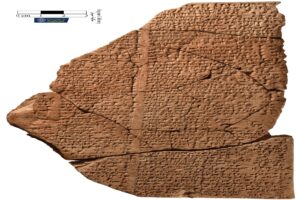Just by touching an object — we can leave behind clues that last millennia.
For the first time, scientists have found a way to identify a specific person through DNA gleaned from a prehistoric artifact. The previous method for linking ancient humans with objects? Association via remains or a grave site.
The relic in this case is an elk tooth pendant worn by a Stone Age woman long enough that it has carried her genetic memory to modern scientists. In a paper published in Nature last week, the scientists sounded more than thrilled to have successfully extrapolated her origins from a mere accessory.
“It’s almost like you open a time travel machine,” said study co-author Elena Essel, a molecular biologist working on ancient DNA at Germany’s Max Planck Institute for Evolutionary Anthropology. “With each sample, we are able to learn a bit more and make more inferences about how these people lived.”
Accomplishing that sounds like no easy task, however — especially as researchers wanted to find the DNA without damaging the priceless artifact.

This 20,000-year-old pendant allowed researchers to test a new technique for uncovering ancient DNA. Photo: Nature
Sleuthing for DNA
The pendant turned up in the Denisova Cave in Siberia, Russia. This site has become well-known to modern anthropologists, who have found evidence of various hominin species dating back 300,000 years.
With the elk tooth, the animal’s DNA remains stored deep within its pores. And when touched by one person over long periods, it also retained her DNA.
To extract the woman’s hidden genetic signature, researchers soaked it in a warm salt solution (which doesn’t affect the pendant). The solution releases small amounts of genetic material, which scientists can then sequence and compare to other samples of ancient DNA.
Researchers estimated the tooth at 19,000 to 25,000 years old. It was likely worn by a woman from northern Eurasia.
It’s yet another window into the prehistoric past, which remains difficult to understand with any clarity. With this new technique, scientists can gain deeper knowledge of ancient social roles between the sexes, and what objects were made by Homo sapiens — or our evolutionary predecessors, like Neanderthals.
Even in the distant past, Essel said, human beings clearly sought joy — just as we do.
“It’s so special for humankind that despite all odds, you have the hardest life on Earth, but you still try to seek the beauty in life,” she said.






